- Position: partial shade
- Soil: fertile, well-drained soil
- Rate of growth: slow-growing
- Hardiness: fully hardyA pair of these tightly clipped box spheres look great flanking a set of steps, a doorway or a path. One of our recommended plants, they're perfect for planting in a large terracotta pot in a partially shady site, where the glossy, dark-green leaves provide all year foliage, interest and structure. Box are happy growing in a sunnier spot, but the combination of dry soil and full sun may encourage poor growth and leaf scorching. If you have sandy soil it is best to keep them in a partially shady spot in the garden.
- Garden care: Ensure that the soil or compost is never allowed to dry out. Trim plants grown as hedges or topiary in mid- or late summer. If you want to maintain a really precise outline, then you can clip it twice a year - once in June, and then again in August/September. Apply a top-dressing of a balanced slow-release fertiliser such as blood, fish and bone (organic) or Growmore (inorganic) around the base of the plant in spring, making sure that none touches the leaves or stems.
-
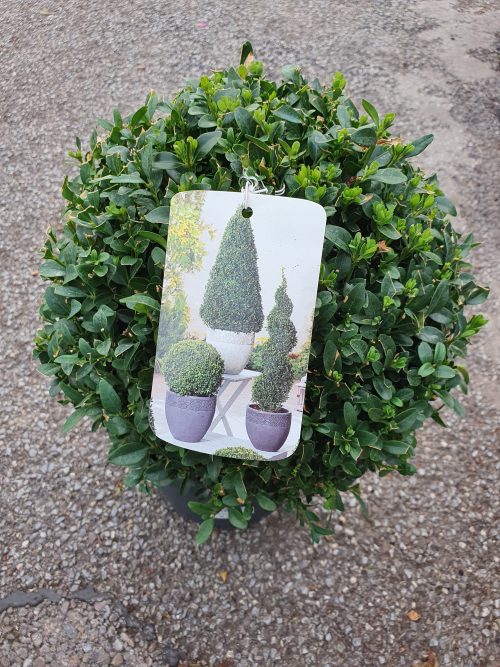
-
Out of stock
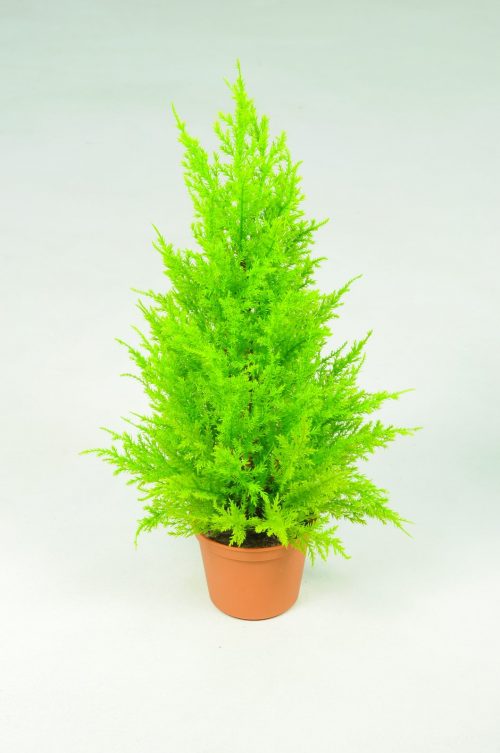 Cupressus macrocarpa 'Goldrest Wilma' is one of the most attractive golden-foliage columnar conifers. Bright golden-yellow foliage. Any free-draining soil in sun or partial shade. Rate of growth up to 60cm per year. Can be used for hedging but doesn't trim quite as well as leylandii. If used for hedging, plant 60-90cm apart. Can be trimmed to keep at the required height Plant Size • Mature Height: 10m • Mature Spread: 2-3m Why We Love It • These trees work wonderfully as topiaries • Fresh lemony scent • Easy to maintain What To Know • Fruit Season: Fall • Position: Full sun • Soil: Well drained • Rate of Growth: Moderate to fast How to Care • In general, growing lemon cypress is not difficult. The trees require well-draining soil, but are not picky about whether it is loamy, sandy or chalky. They also accept acidic, neutral or alkaline soil. • Water regularly - weekly, or more often in extreme heat or containers. • Trimming/Pruning If this plant is used for hedging, it will need to be pruned regularly. It will have to be trimmed to maintain the required height. Use sharp pruning shears to remove the sucker branches and the errant branches that are growing in the wrong direction or making it difficult to fertilize the tree. Since lemon cypress has a conical habit, trim the tree as per its natural shape. Trimming should be done every week during the summer. • Fertilizer Fertilize with the standard, slow-releasing fertilizer that has an equal amount of nitrogen, phosphorus, and potassium once a month. You can also supplement the soil annually with turf fertilizers that contain other nutrients such as magnesium, boron, copper, and zinc
Cupressus macrocarpa 'Goldrest Wilma' is one of the most attractive golden-foliage columnar conifers. Bright golden-yellow foliage. Any free-draining soil in sun or partial shade. Rate of growth up to 60cm per year. Can be used for hedging but doesn't trim quite as well as leylandii. If used for hedging, plant 60-90cm apart. Can be trimmed to keep at the required height Plant Size • Mature Height: 10m • Mature Spread: 2-3m Why We Love It • These trees work wonderfully as topiaries • Fresh lemony scent • Easy to maintain What To Know • Fruit Season: Fall • Position: Full sun • Soil: Well drained • Rate of Growth: Moderate to fast How to Care • In general, growing lemon cypress is not difficult. The trees require well-draining soil, but are not picky about whether it is loamy, sandy or chalky. They also accept acidic, neutral or alkaline soil. • Water regularly - weekly, or more often in extreme heat or containers. • Trimming/Pruning If this plant is used for hedging, it will need to be pruned regularly. It will have to be trimmed to maintain the required height. Use sharp pruning shears to remove the sucker branches and the errant branches that are growing in the wrong direction or making it difficult to fertilize the tree. Since lemon cypress has a conical habit, trim the tree as per its natural shape. Trimming should be done every week during the summer. • Fertilizer Fertilize with the standard, slow-releasing fertilizer that has an equal amount of nitrogen, phosphorus, and potassium once a month. You can also supplement the soil annually with turf fertilizers that contain other nutrients such as magnesium, boron, copper, and zinc -
Out of stock
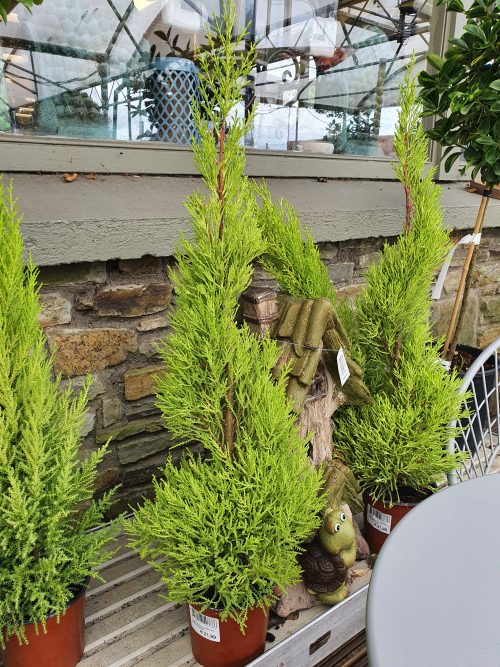
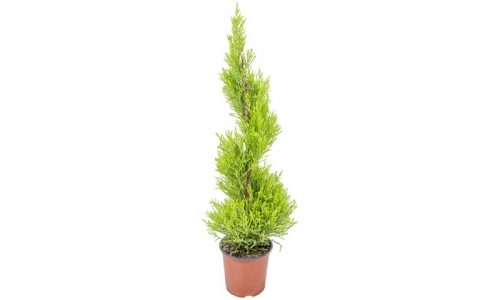 Cupressus macrocarpa 'Goldrest Wilma' is one of the most attractive golden-foliage columnar conifers. Bright golden-yellow foliage. Any free-draining soil in sun or partial shade. Rate of growth up to 60cm per year. Can be used for hedging but doesn't trim quite as well as leylandii. If used for hedging, plant 60-90cm apart. Can be trimmed to keep at the required height Plant Size • Mature Height: 10m • Mature Spread: 2-3m Why We Love It • These trees work wonderfully as topiaries • Fresh lemony scent • Easy to maintain What To Know • Fruit Season: Fall • Position: Full sun • Soil: Well drained • Rate of Growth: Moderate to fast How to Care • In general, growing lemon cypress is not difficult. The trees require well-draining soil, but are not picky about whether it is loamy, sandy or chalky. They also accept acidic, neutral or alkaline soil. • Water regularly - weekly, or more often in extreme heat or containers. • Trimming/Pruning If this plant is used for hedging, it will need to be pruned regularly. It will have to be trimmed to maintain the required height. Use sharp pruning shears to remove the sucker branches and the errant branches that are growing in the wrong direction or making it difficult to fertilize the tree. Since lemon cypress has a conical habit, trim the tree as per its natural shape. Trimming should be done every week during the summer. • Fertilizer Fertilize with the standard, slow-releasing fertilizer that has an equal amount of nitrogen, phosphorus, and potassium once a month. You can also supplement the soil annually with turf fertilizers that contain other nutrients such as magnesium, boron, copper, and zinc
Cupressus macrocarpa 'Goldrest Wilma' is one of the most attractive golden-foliage columnar conifers. Bright golden-yellow foliage. Any free-draining soil in sun or partial shade. Rate of growth up to 60cm per year. Can be used for hedging but doesn't trim quite as well as leylandii. If used for hedging, plant 60-90cm apart. Can be trimmed to keep at the required height Plant Size • Mature Height: 10m • Mature Spread: 2-3m Why We Love It • These trees work wonderfully as topiaries • Fresh lemony scent • Easy to maintain What To Know • Fruit Season: Fall • Position: Full sun • Soil: Well drained • Rate of Growth: Moderate to fast How to Care • In general, growing lemon cypress is not difficult. The trees require well-draining soil, but are not picky about whether it is loamy, sandy or chalky. They also accept acidic, neutral or alkaline soil. • Water regularly - weekly, or more often in extreme heat or containers. • Trimming/Pruning If this plant is used for hedging, it will need to be pruned regularly. It will have to be trimmed to maintain the required height. Use sharp pruning shears to remove the sucker branches and the errant branches that are growing in the wrong direction or making it difficult to fertilize the tree. Since lemon cypress has a conical habit, trim the tree as per its natural shape. Trimming should be done every week during the summer. • Fertilizer Fertilize with the standard, slow-releasing fertilizer that has an equal amount of nitrogen, phosphorus, and potassium once a month. You can also supplement the soil annually with turf fertilizers that contain other nutrients such as magnesium, boron, copper, and zinc -
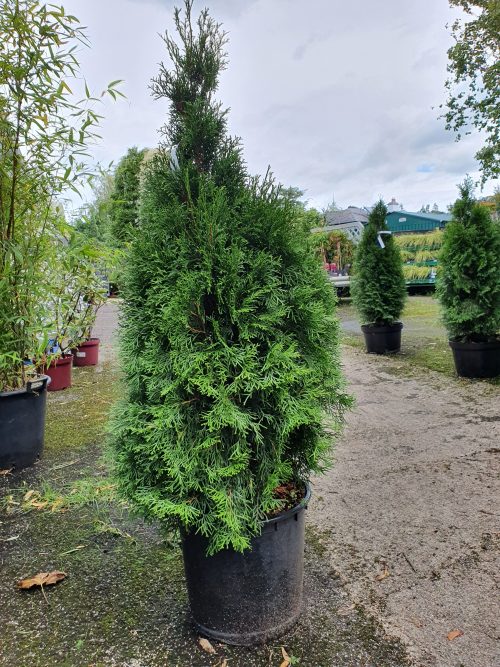 A slow growing, evergreen, erect conifer, Thuja occidentalis Smaragd has scale-like, fresh green leaves that are held closely to the shoots and give a fresh apple-like aroma when crushed. With its narrow, conical shape, Smaragd makes a useful tree for any garden, and is particularly suitable for formal plantings either as an individual specimen or in rows. It is slow to reach its eventual height of around 8-10ft but the narrow, conical shape will broaden out with maturity to reach a diameter of around 6ft. Pot size: 20L Actual height: 100-125cm Site: Very tolerant of inland exposure Soil: Well drained, tolerates clay soils, shallow over chalky soils Position: Full sun, tolerates partial shade Season of Interest: All year round and aromatic foliage Hardiness: Fully hardy Height: 5-8ft (1.5-2.5m) Spread: 3-6ft (1-2m)
A slow growing, evergreen, erect conifer, Thuja occidentalis Smaragd has scale-like, fresh green leaves that are held closely to the shoots and give a fresh apple-like aroma when crushed. With its narrow, conical shape, Smaragd makes a useful tree for any garden, and is particularly suitable for formal plantings either as an individual specimen or in rows. It is slow to reach its eventual height of around 8-10ft but the narrow, conical shape will broaden out with maturity to reach a diameter of around 6ft. Pot size: 20L Actual height: 100-125cm Site: Very tolerant of inland exposure Soil: Well drained, tolerates clay soils, shallow over chalky soils Position: Full sun, tolerates partial shade Season of Interest: All year round and aromatic foliage Hardiness: Fully hardy Height: 5-8ft (1.5-2.5m) Spread: 3-6ft (1-2m) -
Out of stock
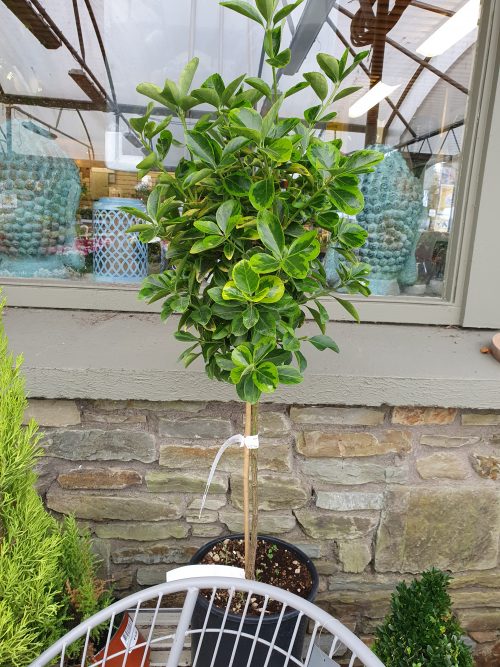
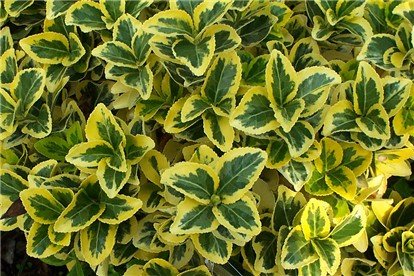 Euonymus japonicus Aureus is an evergreen variety and provides year round interest. Excellent for growing as a specimen shrub or small hedge. Also suitable for coastal areas. The attractive leathery leaves are dark green with bright yellow edges.A Decorative Foliage
Euonymus japonicus Aureus is an evergreen variety and provides year round interest. Excellent for growing as a specimen shrub or small hedge. Also suitable for coastal areas. The attractive leathery leaves are dark green with bright yellow edges.A Decorative Foliage- Pot size: 7.5L
- Height: 4m
- Spread: 2m
- Leaf colour: variegated
- Plant location: sunny
- Plant depth: 15 cm
- Hardiness: -15 Celsius
- Harmful if eaten
- Preferred soil: Grows in any soil
-
Out of stock
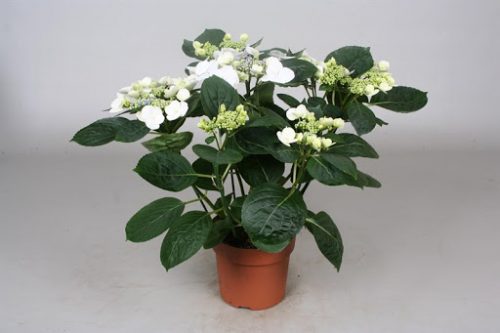
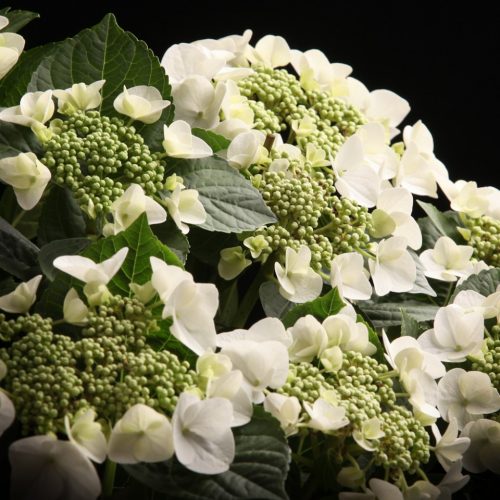 Hydrangea macrophylla ‘Benxi’ Shrubbery suitable for the rock garden rich, fresh, as preferable exposure Partial shade – Shade color White Flowering period is June – September Height 100 cm – 120 cm Density 1 potted seedlings per square meter, Diameter pot 19cm
Hydrangea macrophylla ‘Benxi’ Shrubbery suitable for the rock garden rich, fresh, as preferable exposure Partial shade – Shade color White Flowering period is June – September Height 100 cm – 120 cm Density 1 potted seedlings per square meter, Diameter pot 19cm -
Out of stock
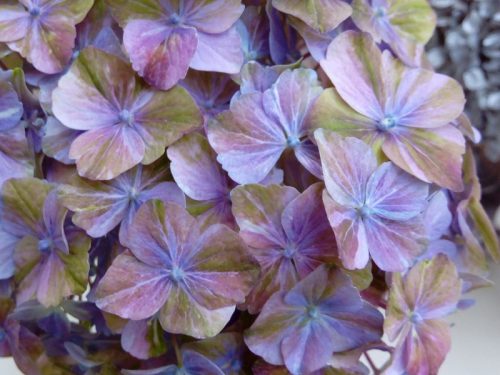 Large purple-green mophead shaped flowerheads with frilly edges when grown in neutral to alkaline soils. Position: They perform best when given a shady, cool moist root run and a sheltered aspect. Maintenance: Mophead hydrangeas require little pruning, simply thin out old stems and remove the dead flowers to a pair of plump green buds in late spring.
Large purple-green mophead shaped flowerheads with frilly edges when grown in neutral to alkaline soils. Position: They perform best when given a shady, cool moist root run and a sheltered aspect. Maintenance: Mophead hydrangeas require little pruning, simply thin out old stems and remove the dead flowers to a pair of plump green buds in late spring.- Flower Colour: Green, Purple
- Flower Type: Mophead
- Flowering Month: June, July, August, September
- Soil Type: Alkaline, Normal
- Aspect: Partial Shade
-
Out of stock
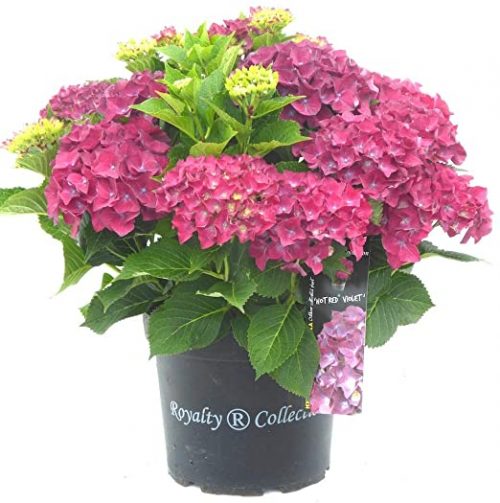 A medium sized deciduous shrub with deep purple/pink-red mophead blooms in summer above dark purple tinged green foliage, when grown in neutral to alkaline soils. Flowers in summer and may change to blue/mauve shades when grown on acidic soils or pink on neutral soils.
A medium sized deciduous shrub with deep purple/pink-red mophead blooms in summer above dark purple tinged green foliage, when grown in neutral to alkaline soils. Flowers in summer and may change to blue/mauve shades when grown on acidic soils or pink on neutral soils.- Flower Colour: Pink, Red
- Flower Type: Mophead
- Flowering Month: June, July, August, September
- Soil Type: Alkaline, Normal
- Aspect: Partial Shade
- Hardiness*: Hardy
- Foliage Type: Deciduous
- Foliage Colour: Green, Bronze/purple
- Height after 10 years*: 0.9-1.2m (3-4ft)
- Pot Size: 3 Litre
-
Out of stock
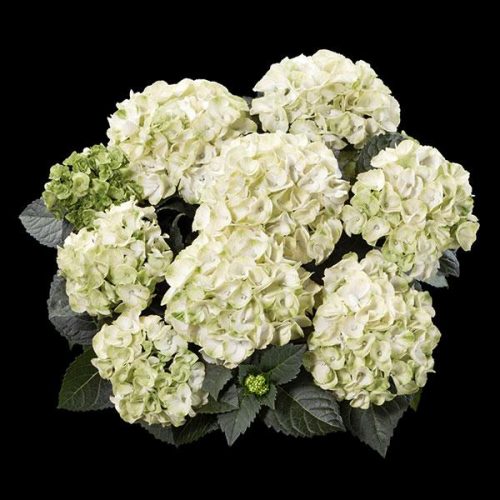 Hydrangea Macrophylla Caipirinha is a compact deciduous shrub with dark green ovate toothed leaves. During the summer it has beautiful rounded clusters of white mop head flowers fading with age to dark green with a red border around each petal at the end of the flower. Eventual height and spread up to 1.2 metres pot size: 3L
Hydrangea Macrophylla Caipirinha is a compact deciduous shrub with dark green ovate toothed leaves. During the summer it has beautiful rounded clusters of white mop head flowers fading with age to dark green with a red border around each petal at the end of the flower. Eventual height and spread up to 1.2 metres pot size: 3L -
Out of stock
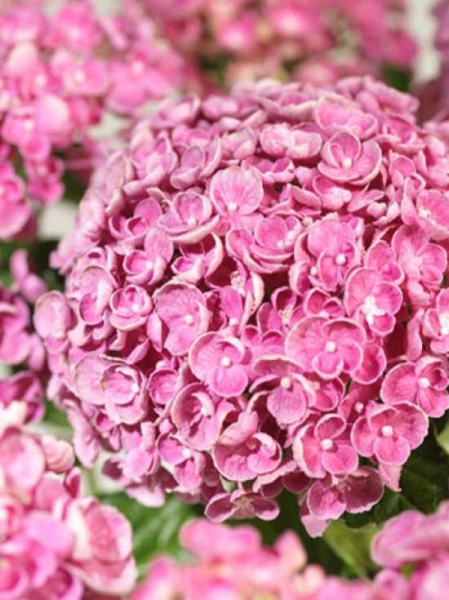
- Flowering Period:June, July, August, September
- Final height:80cm to 100cm
- Final width:80cm to 100cm
- Available:February, March, April, May, June, July, August, September, October, November
- Fragrances:lightly scented
- Use:beds/borders, for containers, as a hedge, for group plantings, as a specimen plant
- Hardiness:hardy
- Soil:moist, heavy, moderately heavy, neutral, acidic, slightly acidic
- Location:partial shade
- Flower Colour:pink, grey
- Leaf Colour:green
-
Out of stock
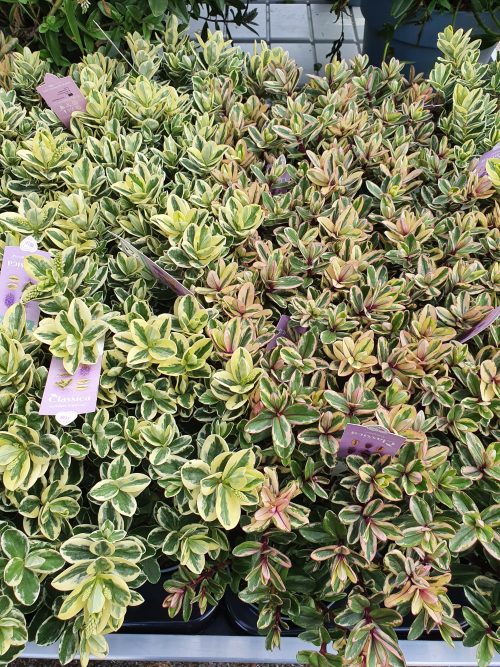 Katrina' is a compact, upright, bushy, evergreen shrub bearing broadly elliptic, grey-green leaves with pale yellow margins and dense racemes of purple flowers in summer. Plant Size • Mature Height: 0.5-1m • Mature Spread: 0.5-1m Why We Love It • Excellent addition to beds, borders and containers • Attracts butterflies and bees What To Know • Season of Interest: Winter-Autumn • Position: Full sun, partial shade • Soil: Moist, well-drained How to Care • The hebe plant does not require a lot of care once it is established. Although the shrub doesn’t need much in the way of fertilizer, you can apply some once a year in late winter or early spring prior to new growth. • Deadheading the spent blooms can be done to help promote additional flowering. You can also trim hebe plants back about halfway after flowering to promote bushier growth. • These shrubs are usually propagated through both seeds and semi-hardwood cuttings taken in summer. • In areas with harsher winters, they should be protected by surrounding them with straw mulch.
Katrina' is a compact, upright, bushy, evergreen shrub bearing broadly elliptic, grey-green leaves with pale yellow margins and dense racemes of purple flowers in summer. Plant Size • Mature Height: 0.5-1m • Mature Spread: 0.5-1m Why We Love It • Excellent addition to beds, borders and containers • Attracts butterflies and bees What To Know • Season of Interest: Winter-Autumn • Position: Full sun, partial shade • Soil: Moist, well-drained How to Care • The hebe plant does not require a lot of care once it is established. Although the shrub doesn’t need much in the way of fertilizer, you can apply some once a year in late winter or early spring prior to new growth. • Deadheading the spent blooms can be done to help promote additional flowering. You can also trim hebe plants back about halfway after flowering to promote bushier growth. • These shrubs are usually propagated through both seeds and semi-hardwood cuttings taken in summer. • In areas with harsher winters, they should be protected by surrounding them with straw mulch. -
Out of stock
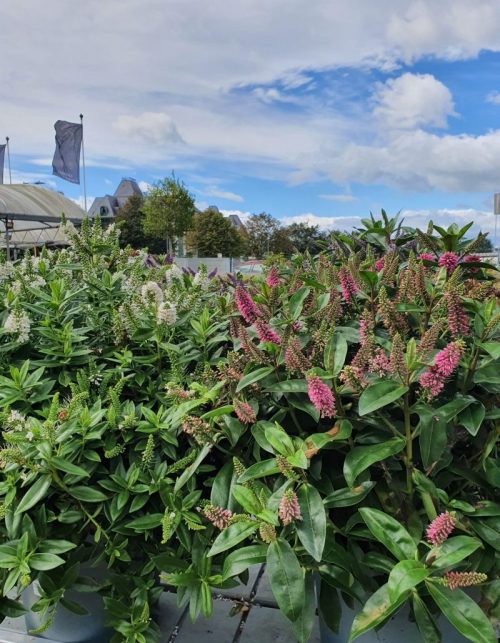 Hebe (Evergreen Veronica) is an easy to grow flowering evergreen shrub native to New Zealand and South America. Hebe plants come in many sizes ranging from dwarf shrubs, suitable for planting in patio pots and rockeries, to large hebe plants that are perfect for planting in a large garden. Many varieties of Hebe flower throughout summer and autumn - some varieties of Hebe flower during the winter. Although mostly hardy, a cold English winter can kill some types of Hebe plants. Hebes especially need to be protected from strong winds. The variegated-leafed Hebes seem to be amongst those most affected by cold winds and wintery weather. Hebes are easy to propagate from cuttings.
Hebe (Evergreen Veronica) is an easy to grow flowering evergreen shrub native to New Zealand and South America. Hebe plants come in many sizes ranging from dwarf shrubs, suitable for planting in patio pots and rockeries, to large hebe plants that are perfect for planting in a large garden. Many varieties of Hebe flower throughout summer and autumn - some varieties of Hebe flower during the winter. Although mostly hardy, a cold English winter can kill some types of Hebe plants. Hebes especially need to be protected from strong winds. The variegated-leafed Hebes seem to be amongst those most affected by cold winds and wintery weather. Hebes are easy to propagate from cuttings.FLOWERS ON A HEBE PLANT
The flowers on a Hebe shrub are small and grouped together in spikes. The colours of Hebe flowers range from white through pink, blue, lilac and purple to bright crimsons.
FOLIAGE
The leaves provide attractive year round foliage with different colours including silver and green, grey, violet, burgundy, bronze and red.BUTTERFLIES
This delightful shrub has flowers which will attract butterflies and bees to your garden.WHERE TO PLANT A HEBE SHRUB
A Hebe is a good all year round foliage plant. Its flowers can provide colour throughout all growing seasons. Grown in mixed plantings of summer annuals the flowers of a Hebe add to the floral display whilst the shape and form of the bush give a sense of stability. Hebe can be grown as an informal hedge - but if clipped back too hard it will not produce so many flowers. The smaller hebes make good ground cover plants or add interest to a rockery. A Hebe should be planted in a well drained soil and, if possible, in a position protected from wind.HOW TO PLANT A HEBE
- Before planting a Hebe soak the roots in water
- Dig a hole twice as wide as the container that the Hebe is in.
- Add a spadeful of compost and some general purpose fertiliser to the soil taken from the hole that you have dug.
- Remove the plant from the pot - tap the sides and base of the container to release the Hebe.
- Place the hebe plant into the hole.
- Fill in the space around the plant with the soil and compost mixture and gently firm with your fingers or tread in.
- Water in with plenty of water.
- Mulch around the base of the plant to help to conserve moisture.